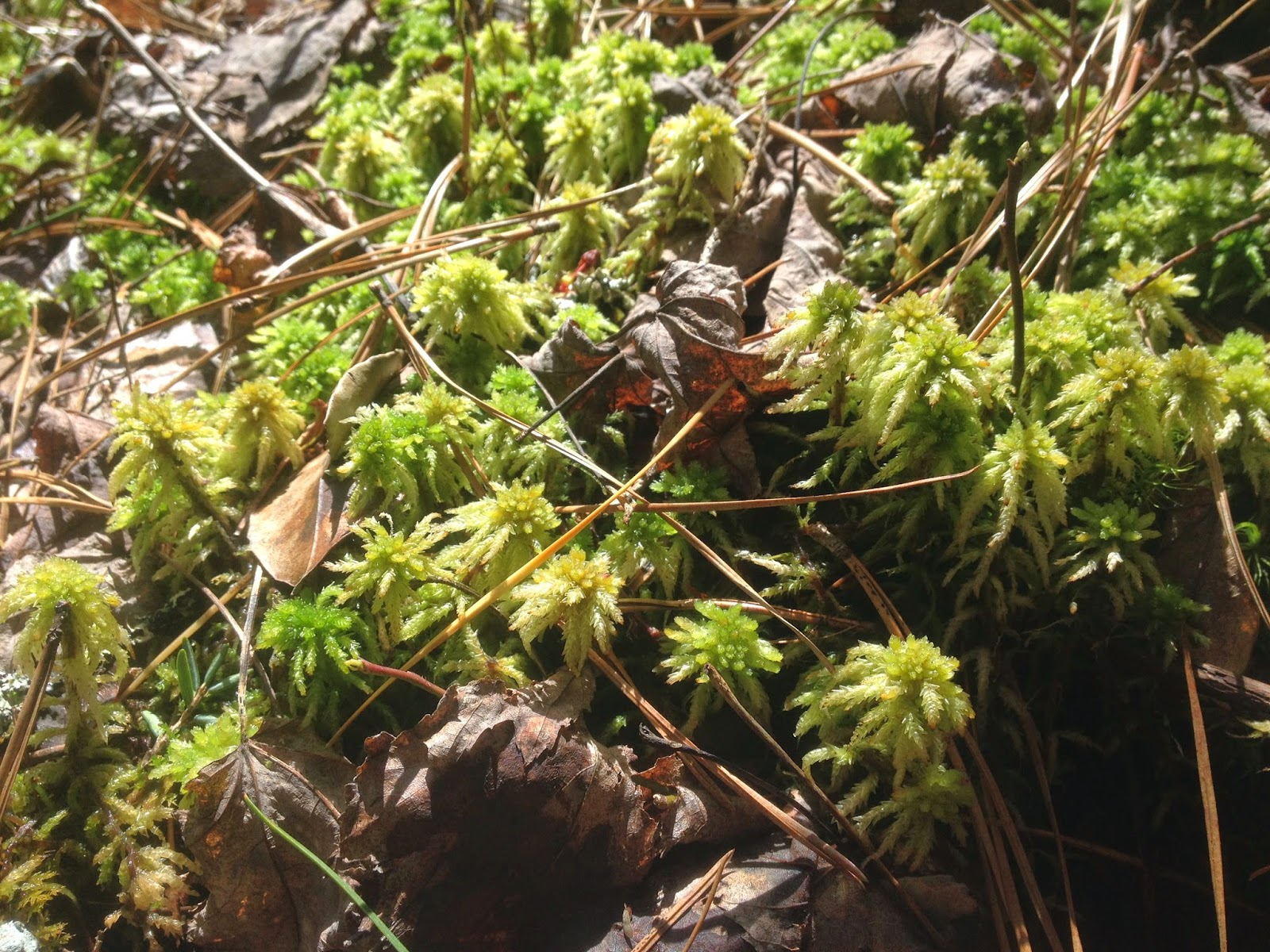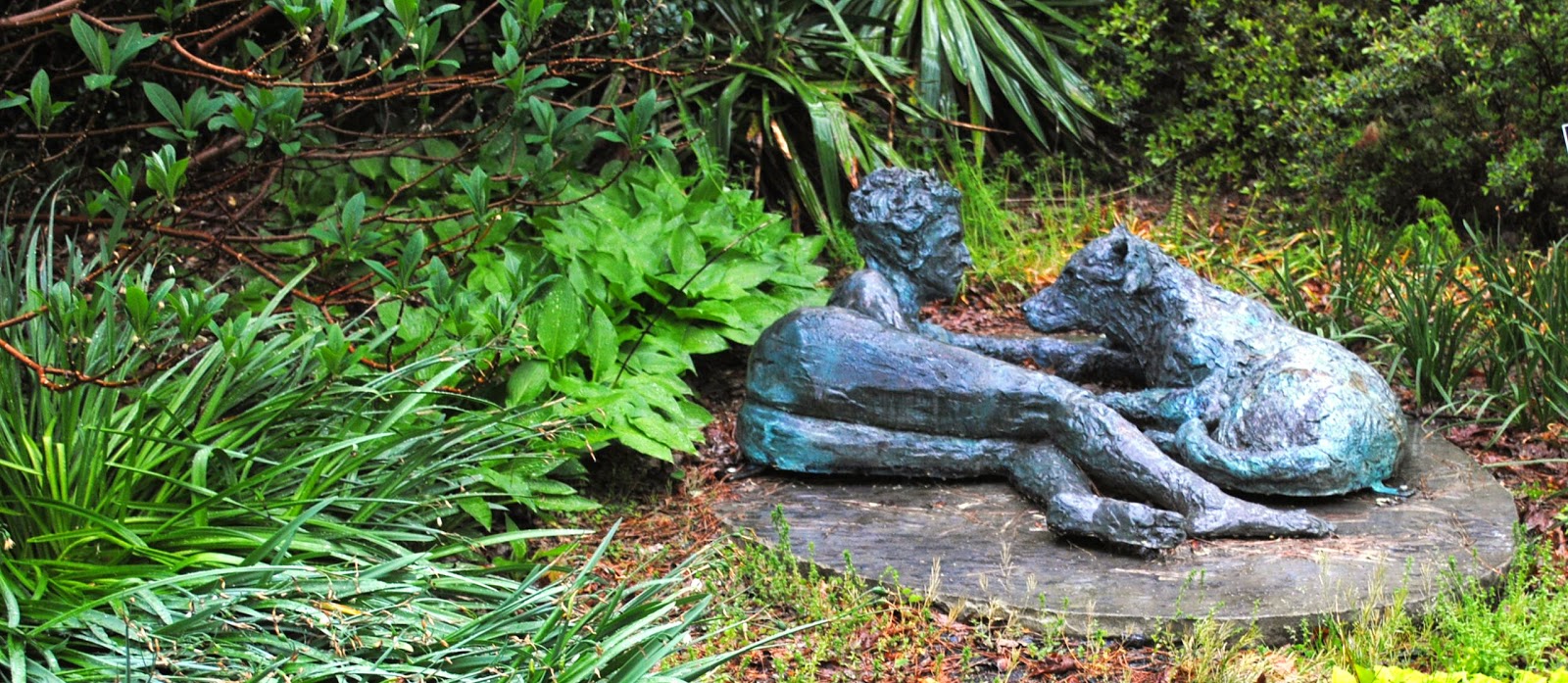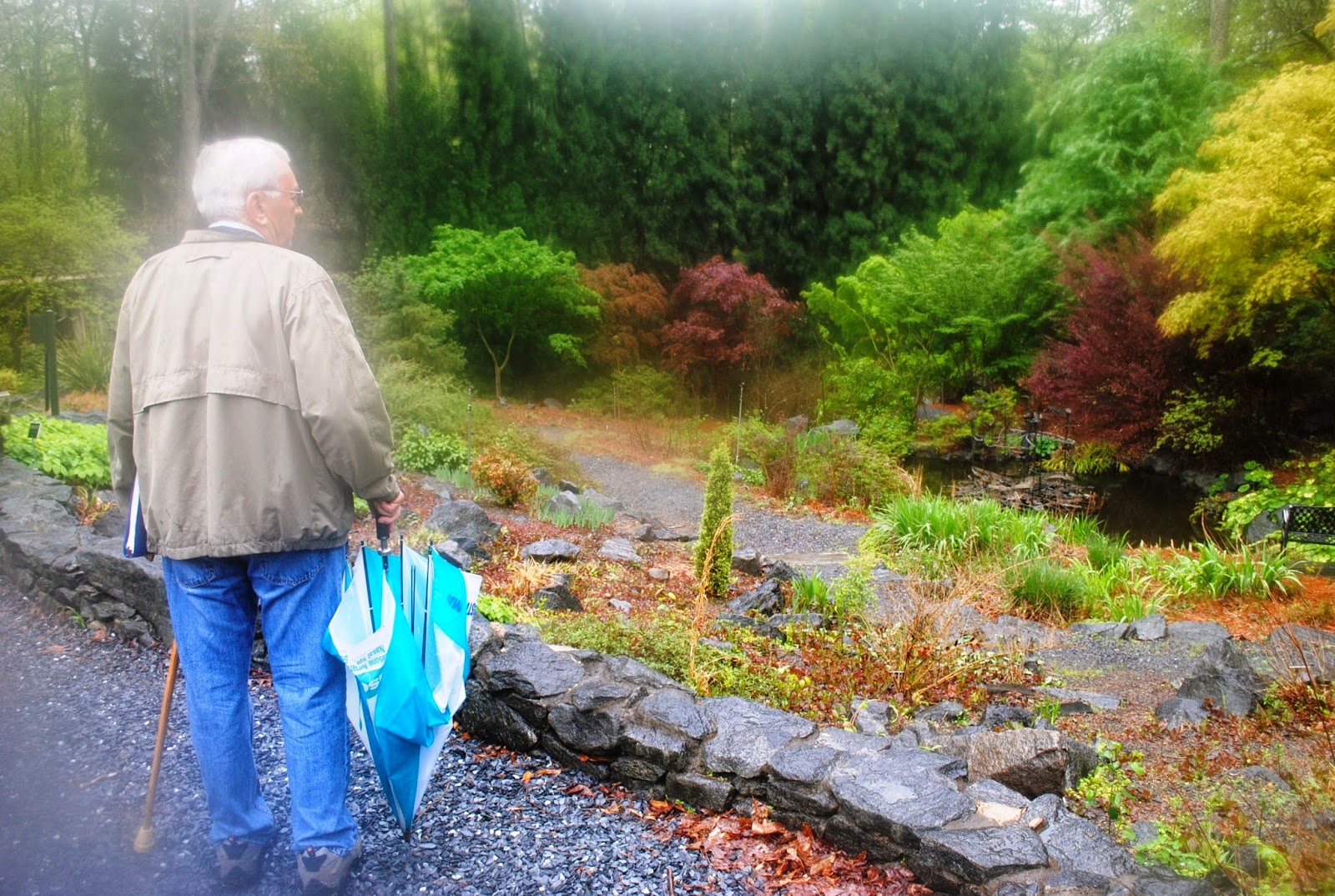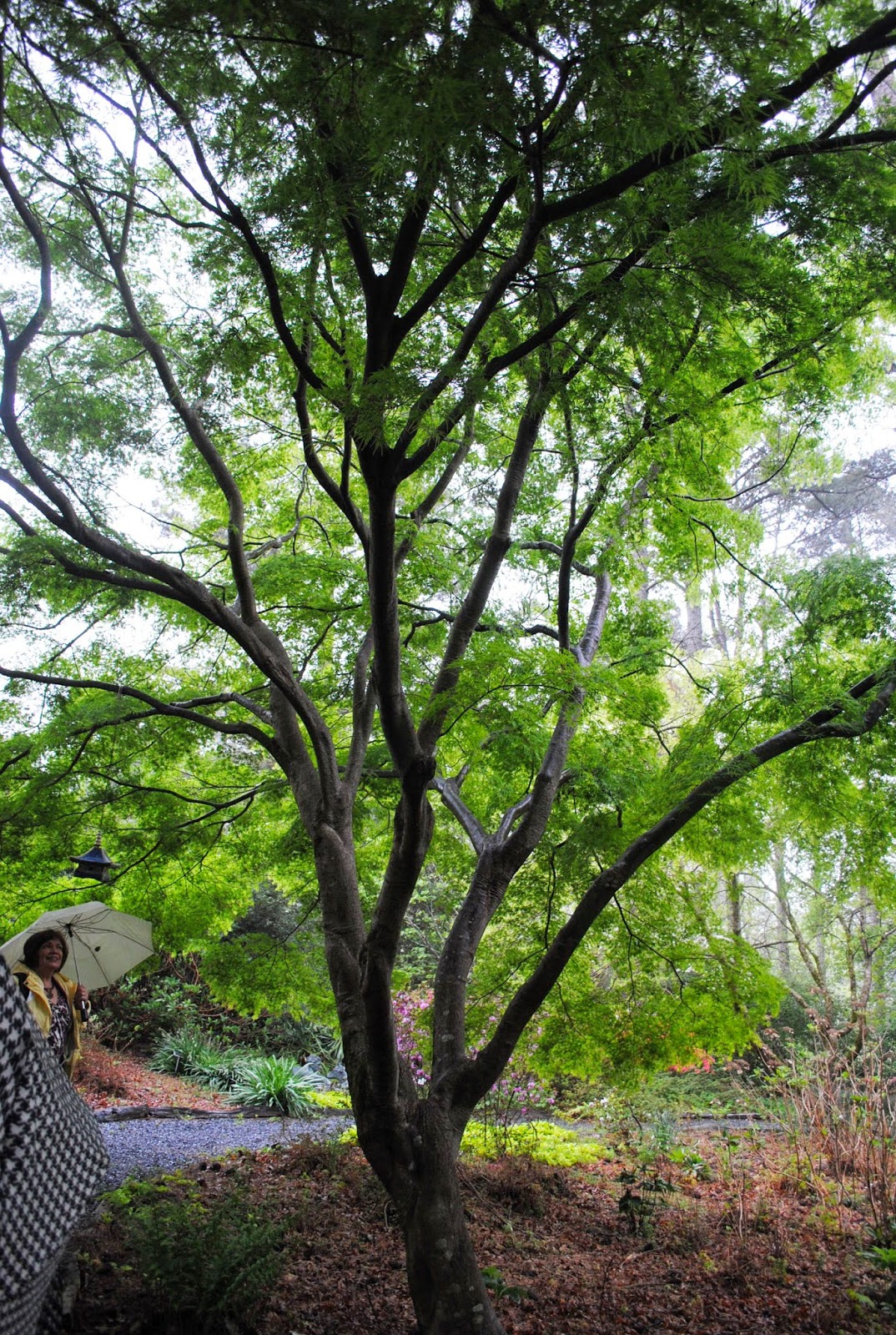Carrie Radcliffe, (Flora Unlimited) made arrangements with David Danley, (Pisgah National Forest Botanist) who oversees this area for the Forestry Service to conduct this field trip for SAPS. On top of that, we were treated to the presence of our own Dan Pittillo who always accentuates the level of knowledge with his presence.
This is typically the best time to see the blooms but the season is delayed at least a couple of weeks. However, David provided us with a tour to one of the numerous bog sites among the Pink Bed area which includes 2593 acres and is habitat for one of the best populations known of Federal Threatened swamp pink (Helonias bullata). He kindly orchestrated it so we could get a good view of the bog and the plants without having to get our feet too wet!
David also provided us with a lively discussion of the intricacies of sphagnum moss (Sphagnum spp). He has been studying the microscopic differences among this species for decades and has identified 36 species in Western NC. We were dazzled by other bryophytes, including the rare Carolina mnium (Plagiomnium carolinianum).He also told us about the challenges of managing these fragile and constantly changing plant communities. Beaver activity, humans and invasive exotic plants are the most threatening elements. Carrie and David discussed the similarities and differences between managing this large, intact natural area and the smaller, more fragmented bogs in the southern extent of the distribution of swamp pink and purple mountain pitcher plant (Sarracenia purpurea var. montana), another bog jewel hat is hidden in the area.
Although the Pink Beds have not fully awakened from dormancy, a handful of woodland gems were blooming. Trout lily (Erythronium ubliatum) and wood anemone (anemone quinquefolia) graced the drier parts of the wooded understory. The leaves of false hellebore (Veratrum parviflorum) stood out strongly. Yellowroot was showing off its usually inconspicuous flowers by blooming en masse in sunny, wet patches. Various violets were blooming, including sweet white violet (Viola blanda) and Halberdleaf violet (V. hastata)> We admired the pistillate and staminate spikes of a sedge flower (Carex communis), and were overwhelmed by the many other species in the area that were not blooming and thus unidentifiable. The buds of horse sugar (Symplocos tinctoria) were quite showy!
Contributed by Kathy Stilwell with Carrie Radcliffe
Here is a link to Ed Shwartzman's inventory of the Pink Beds. It is a fascinating description of the area.
A few of the participants have graciously offered their thoughts on the day.
From Karen Lawrence:
"An adventure through the tangled woods to study bogs, finding the interesting plants growing among the sphagnum mosses and learning that there are many different species of sphagnums.From Jean Hunnicutt:
Seeing the splayed out leaves of the Helonias and longing to see the bright pink blooms with the blue anthers of this Swamp Pink wildflower. We all vowed to come back in a month or so.
Finding a wonderful grouping of Trout Lily blooms. Walking the boardwalks over the swamps where the beaver have worked the area and hearing migrating warblers like the Black-Throated Blue, Parula, and Blackburnian Warblers.
Mostly, being with Carrie Radcliffe, Dan Pittillo, and Dave Danley and learning so much from them about the history, plants, and management of the Pink Beds."
From Elena Marsh:Who could have imagined we'd have such a wonderful day - with no Helonias in bloom!?!
This was the first visit for most of us to this amazing site and we weren't disappointed. The Pink Beds Loop is a beautiful hiking trail and David's side trips to the mountain bogs were challenging and fun. Thanks to our 3 guides - David, Carrie and Dan - for a day of learning and wonder. I'm looking forward to going again when the Helonias are blooming (or not).
"Tom and I really enjoyed the trip with you and the others. It was amazing to be able to wind thru the brush and woods to find bogs hidden in there. And the walk itself was wonderful too. Just wish more was in bloom for us to see but did learn about the different mosses and also the site we were walking on itself. You get a much greater appreciation for the area you are visiting after you learn about what is actually there."
From Mark Westhafer:
"We enjoyed the Pink Beds tour, and especially having David narrate the tour. His knowledge was impressive. I had never heard of Helonias so that was new. it was a new area to us and we enjoyed the hike and seeing the area.
We'll be back for more!"
 |
| Trout Lily |
 |
| Dan Pittillo |
 |
| David Danley |
 |
| Yellowroot |
 |
| Beavers |
 |
| Carrie Radcliffe and David Danley |
.JPG) |
| Dan getting a close up of trout lily by Karen Lawrence |
Thank you to David Fann for providing these photos.David Fann's Photos of the day











































